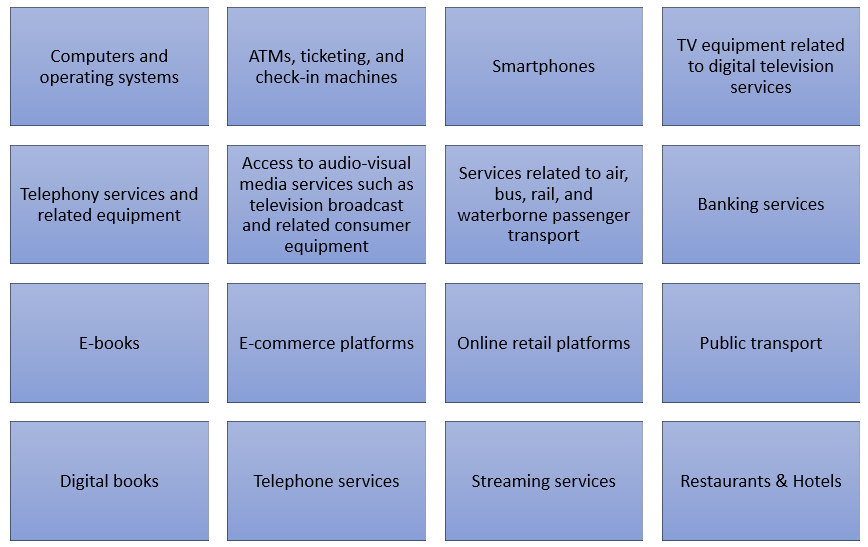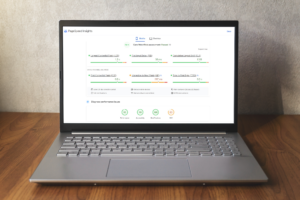In the fast-paced digital transformation landscape, accessibility is taking center stage with the impending implementation of the European Accessibility Act (EAA) 2025. This landmark legislation, set to become enforceable in June 2025, represents a significant advancement in enhancing accessibility for individuals with disabilities across the world.
As businesses prepare for this transformative shift, it’s crucial to understand the intricacies and implications of the EAA. This blog post provides a comprehensive analysis of the act, including its scope and compliance requirements. Additionally, it addresses the potential implications of non-compliance, which may have significant consequences.
What is the EAA 2025?
The EAA is a landmark legislation that will come into force in June 2025, aiming to improve accessibility for people with disabilities. It is a directive (Directive 2019/882) that will be enforced in European Union member states, requiring businesses to make their products and services more accessible. The EAA will impact companies and organizations such as digital services, e-commerce sites, public transport, banking, streaming services, restaurants, hotels, digital books, telephone services, and computers and operating systems.
The EAA is designed to harmonize accessibility laws across all EU member states, originating from the UN Convention on the Rights of Persons with Disabilities. The act will require businesses to proactively make necessary updates to ensure accessibility compliance as technology and guidelines evolve. Businesses operating in the EU or targeting an EU audience must ensure compliance with the EAA.
The act will be enforced at the national level, and each EU member state will decide on the specific enforcement measures, which may include fines or penalties for non-compliance. The EAA 2025 represents a significant step toward building inclusivity and bridging accessibility gaps. It is a transformative directive requiring businesses to make their products and services more accessible, ultimately enabling people with disabilities to participate fully in society.
Who needs to comply?
The European Accessibility Act (EAA) of 2025 has a broad scope of responsibilities, covering a range of entities and organizations within the European Union. It’s important to understand who is subject to its compliance requirements to navigate the regulatory landscape effectively. Below is a breakdown of who needs to comply with the EAA:
Who does need to comply:
- Businesses operating in the EU: Any company operating within the European Union must comply with the EAA’s requirements regardless of its size or origin.
- Businesses targeting an EU audience: Even if your business isn’t physically located in the EU, you must comply if you offer products or services to people in the EU.
- Public authorities: All state, regional, and local government bodies within the EU must follow the EAA.
- Organizations governed by public law: Any entity financed by public funds within the EU, such as universities or hospitals, must adhere to the EAA’s guidelines.
- Associations formed by the above: Groups created by public authorities or those working towards public interest goals in the EU are included under the compliance umbrella.
Exception:
Microenterprises: Businesses with fewer than 10 employees and an annual turnover or balance sheet below €2 million are exempt in 2025. However, compliance will be mandatory for them by 2030.

Enforcement and Penalties of the EAA 2025
The European Union has introduced EAA act 2025, to ensure that businesses provide accessible products and services to individuals with disabilities. The responsibility of conducting regular compliance checks, addressing complaints, and overseeing company corrective actions lies with the EU Member States. Penalties for non-compliance will be determined by individual EU countries, with adjustments based on factors such as the severity of non-compliance and the impact on affected individuals. These penalties range from EUR 301 to a maximum of EUR 1,000,000, and are designed to be proportionate, effective, and dissuasive. Member states have the flexibility to establish regulations for enforcement, and it is essential to ensure full compliance with these regulations.
Benefits of the EAA 2025
The European Accessibility Act (EAA) 2025 offers several benefits, including:
- Inclusivity and Equal Participation: The EAA aims to ensure that products and services are accessible by design, promoting equal participation for the 135 million people with disabilities in the EU
- Harmonization of Accessibility Laws: The EAA harmonizes accessibility rules across all EU member states, creating a consistent framework for accessibility requirements
- Improved Customer Base and Satisfaction: Compliance with the EAA can lead to a more extensive customer base, increased satisfaction, and improved user experience, ultimately enhancing sales and brand reputation
- Legal Compliance and Cost Reduction: Adhering to the EAA helps businesses meet legal requirements, reduce costs, and avoid penalties and litigation
- Market Opportunities and Social Responsibility: The EAA provides market opportunities for businesses, demonstrates a commitment to inclusivity and social responsibility, and ensures that no individual is left behind, irrespective of their condition
In summary, the EAA 2025 not only benefits individuals with disabilities and older people but also offers advantages to businesses in terms of market opportunities, customer satisfaction, and legal compliance.
How can CX Score help you ensure compliance?
Businesses often struggle to comply with the strict regulations of the EAA. To simplify their accessibility testing processes, they require dependable solutions. CX Score‘s innovative accessibility testing platform is designed to assist such organizations in complying with EAA mandates.
With a host of advanced features, CX Score provides a complete solution for assessing and optimizing digital experiences to ensure compliance with accessibility standards.
- Comprehensive Validation: CX Score employs AI-generated synthetic users to comprehensively validate every aspect of digital experiences. This ensures a thorough examination of applications, websites, and electronic documents.
- Assistive Technology Simulation: CX Score goes beyond basic validation. It simulates users with varying disabilities to validate applications for compatibility with a spectrum of assistive technologies, exceeding the EAA’s fundamental requirements.
- Document Accessibility: CX Score doesn’t limit itself to websites and applications. Its capabilities extend to assessing the accessibility of electronic documents, ensuring compliance with EAA standards for a holistic approach to digital inclusivity.
- Continuous Compliance: CX Score’s real-time reports and interactive dashboards allow organizations to assure continuous compliance with the EAA. Leaders can visualize results by various standards and conformance levels, enabling them to optimize product design based on recommendations and insights.
As we examine the EAA 2025, it is evident that inclusivity is becoming increasingly important in the digital landscape. This legislation, which will be enforced from June 2025, places a strong emphasis on accessibility for individuals with disabilities. While adhering to the requirements of the legislation may be challenging, it also presents opportunities for businesses to enhance customer satisfaction, expand their market reach, and demonstrate a sense of social responsibility. Let us prioritize inclusivity and equality in the digital age, ensuring that no one is left behind.
Click here for a free accessibility assessment of your website.



